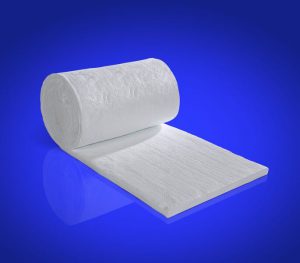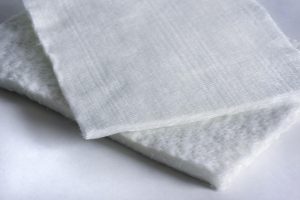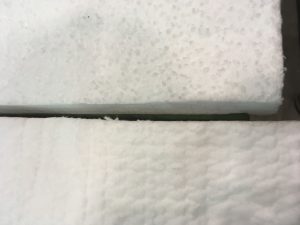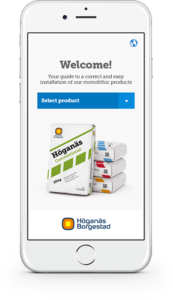INSULATION BLANKETS


Our high temperature insulating fibre blankets provide thermal insulation in processing of metals, petrochemicals, cement, ceramics and glass, and are used by manufacturers of equipment for aerospace, automotive, marine and domestic applications. Typical applications include:
- Chimney and duct insulation in power generation plants
- Pipe insulation in high temperature processing plants
- Linings and back-up insulation for all types of furnaces, heaters and kilns
- Insulation of steam turbines and hot boxes
- Exhaust and heat shield cladding
- Vehicles and domestic appliance insulation
Glasswool (Thermat, Filomat)
Our glassfibre (100% E-glass) insulating blanket made from continuous filament fibres of 9 microns (non-hazardous). Thermal blankets are mechanically bound by way of a needle-felt technology, without of the use of binders. Temperature rating up to 600°C
AES (Superwool)
Our Superwool blanket products offer exceptional performance-to-weight ratio and are resistant to chemical attack. Superwool is the only low bio persistence fibre available in the market with a classification temperature of 1200°C and 1300°C on selected grades and applications.
Superwool is an engineered solution that is ideally suited as an alternative solution to RCF based fibres in some applications. Benefits of Superwool fibres include:
- Lower thermal conductivity over some RCF fibre materials resulting in an improved insulation performance by up to 20%
- Our Superwool Plus fibres feature less shot resulting in a tighter fibre matrix
- Lower density grade of Superwool in place of an RCF material features a material weight savings up to 25%
- Superwool XTRA does not form crystalline silica when exposed to high temperatures
Superwool fibres are exonerated from carcinogen classification within Europe and not classified as hazardous by IARC or under any national regulations on a global basis. They have no requirements for warning labels under GHS (Globally Harmonised System for the classification and labelling of chemicals). In Europe, Superwool fibres meet the requirements specified under NOTA Q of European Directive 67/548. All Superwool fibre products are therefore exempt from the classification and labelling regulation in Europe.
Here is a Superwool blanket compared with a competitor. Superwool contains a lot less shot and a lot more clean fiber which is clearly visible lying beside each other.

RCF (Kaowool, Cerablanket etc)
All our RCF blankets are air laid into a continuous mat and mechanically needled for added strength and surface integrity. They are lightweight and strong for easier installation, have low thermal conductivity and heat storage capacity for effective energy savings, and good thermal shock resistance for use in difficult environments.
Kaowool blankets feature controlled density, high tensile strength, and resiliency and are classified to 1260°C. Cerablanket is classified up to 1315°C and is a spun blanket manufactured from a high purity blend of alumina-silica. Cerachem and Cerachrome offer excellent chemical stability and strength and have superior acoustic as well as thermal insulation characteristics. They are classified to 1426°C.
PCW (Maftec, Denka)
Our PCW fibres are ideal for high temperature and chemically aggressive applications. These fibres are manufactured by sol-gel technology using processes specifically designed to produce fibres of defined dimensions.
Denka blankets are more resistant to acid and alkaline solutions than conventional alumino-silicate fibre blankets and have exceptionally good thermal insulation characteristics. They are classified to 1600°C.
 Get installation instructions direct in your mobile phone, together with product and safety data for all Höganäs Borgestad monolithic products
Get installation instructions direct in your mobile phone, together with product and safety data for all Höganäs Borgestad monolithic products
Find us on social media